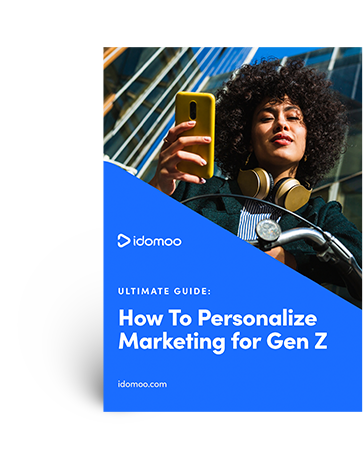A version of this article appeared originally on Customer Experience Magazine. You can read it here.
When it comes to customer experience, the newest generation of consumers is set to disrupt the status quo.
They have different brand expectations, as you’ll see below, and they’re poised to have the economic clout to make their voices heard. Research from Bank of America projects that this generation’s combined income will hit $33 trillion by 2030, surpassing millennials’ income the following year.
If you want to engage Gen Z consumers, you’ll need to pivot your CX to align with their values, which include authenticity, integrity, and personalisation. In practice, that means being transparent, trustworthy and, above all, treating them as individuals.
The Demand for Personalised Experiences
Personalisation isn’t just a trend. For Gen Z, it’s essential.
Defined as anyone born after 1996, this generation has grown up in a tech-centric world that caters to their tastes. They’re used to custom playlists, targeted ads and personalised content and recommendations.
As a result, they expect brands to deliver seamless personalised experiences throughout the customer journey.
- 41% of Zoomers will provide their data for a personalised experience.
- 62% are willing to pay extra for personalisation, more than any preceding generation.
- 75% of Gen Z said they’re more likely to buy a product if they can customise it.
- 45% will leave a website if it doesn’t predict what they like or need.
Personalisation is now a differentiator with this generation that typically has less brand loyalty and is more likely to switch brands based on price alone. And it can promote retention long-term. After all, a brand that knows you so well it can anticipate your desires is pretty hard to replace.
Personalisation in Practice
At first blush, all of this personalisation can sound like a logistical nightmare. What once worked for the masses now needs to be tailored for each individual.
But there are ways to integrate personalisation into your business strategy to support your bottom line and fit with your current operations. Modern technology and an increasing volume of customer data make personalising at scale not just possible but simple.
Here are a few opportunities to craft personalised experiences that wow Gen Z consumers, from marketing to customer service to the ultimate goal: brand advocacy.
1) Personalised Communications
The secret to any great relationship is communication, and the brand-consumer relationship is no different. But we’ve gone way beyond only adding someone’s first name to an email greeting. Personalisation should happen throughout the customer journey. It should be deep and real rather than anecdotal. That means the content should be personalised rather than simply adding names to a generic message.
Key opportunities for personalised communications include:
- Customer acquisition
- Onboarding
- Renewals and retention
- Upselling and cross-selling
Where and what can you personalise? Almost anything: apps, websites, GIFs, videos. Visual culture, particularly video, is on the rise with this generation, so personalisation needs to go beyond text.
Even more important, you should personalise across channels to provide the streamlined experience Gen Z is looking for. An international study by The Centre for Generational Kinetics found that 66% of Gen Zers expect websites and apps will “talk” to each other to create a more personalised experience.
Consider what you have to say before deciding the channel. A personalised offer can be a great sales tool. It features exactly what customers care about (based on past behavior and demographic data) and includes their name for an exclusive feel. You might keep it simple by putting it in a GIF or an image.
But if you want to get your customer excited about something big — say, the start of their relationship with you — a video says it best. See how the University of South Dakota personalised the acceptance process for future students, transforming the student experience.
Read more: For additional tips and strategies on engaging young adults with video marketing, check out our guide on how to use video to reach Gen Z.
2) Personalised Customer Service
So often, customer service is where customer experience breaks down. The onboarding process is well rehearsed and structured. The marketing messages are polished.
But then something goes wrong. The customer needs help, and everything falls apart. Long hold times. Inefficiencies. Human error takes over.
Digital personalisation lets you offer 1:1 customer support at scale, right where your Gen Z consumer needs it.
And, no surprise, this kills retention: 96% of customers will leave a brand based on a poor customer service experience.
Don’t let it happen to you. Digital personalisation lets you offer 1:1 customer support at scale, right where your Gen Z consumer needs it — in the palm of their hand. These Digital Natives spend over 8 hours a day online, and virtually all of them (98%) have a smartphone.
By making your customer service self-serve, it’s 24/7 and on-demand, the always-on availability younger consumers are used to.
There are a few ways to personalise your customer service experience:
- Use a personalised chatbot. If the customer can give their name or an ID number to identify their account, the chatbot can provide personalised tips to solve their problem — a lot easier than scrolling through online FAQs.
- Have a personalised message to follow up call centre calls. When the customer calls about a common issue (like claims processing in insurance), send a personalised follow-up. Video works well here, summarising coverage, options and next steps in a digestible format they can replay at will.
- Let them choose their own adventure. Use interactive video or a customer portal where they can select what they need help with and then see the next scene that shows them what to do.
One tip to keep in mind is minimising text. When the customer is reaching out for help, they’re often unhappy or stressed. This isn’t the time to blast them with fine print. Instead, keep it visual, interactive and simple. Add a human touch when empathy is needed most.
3) User-Generated Personalisation
You’ve probably heard about the rise of UGC. A trend that was already accelerated by millennials is only growing as Digital Natives take the reins.
User-generated content is much more effective at influencing potential customers than the average ad spot, but the challenge is getting customers to create content on your behalf. The solution? Make it easy and fun.
In Deloitte’s recent consumer review on the rise of mass personalisation, researchers noted that many consumers (42%) prefer brands offer personalisation through fill-in-the-blank options they can choose from. This works for content creation too. Give users a web form or even an interactive video that lets them select what they want to include in their customised content.
One practical example that brands often leverage is personalised recaps, where customers choose top achievements or experiences to showcase in a highlights reel. That’s exactly what CCP Games did with their recent campaign for EVE Online.
Another common application for personalised user-generated content is loyalty programs.
Less than a quarter of loyalty club members are happy with their current level of personalisation. Why not give them a personalised recap to remind them why they love you?
Let them upload their own media or choose from preset options. Either way, this kind of content is incredibly shareable, boosting brand advocacy and reaching new audiences.
CX for Gen Z
In a nutshell, personalised customer experiences for Gen Z consumers should be highly visual, omnichannel and, when possible, interactive. It shows that you care about them and gives them a reason to stay.
But personalisation doesn’t have to be daunting. Start small. Begin with the data you have — or even without data, letting them add their own for UGC. The important thing is when you get started, and that time is now.
We’re here to help, whether you need full-service support or just access to a platform that lets you enrich your videos (millions at a time) with data-driven personalisation.






